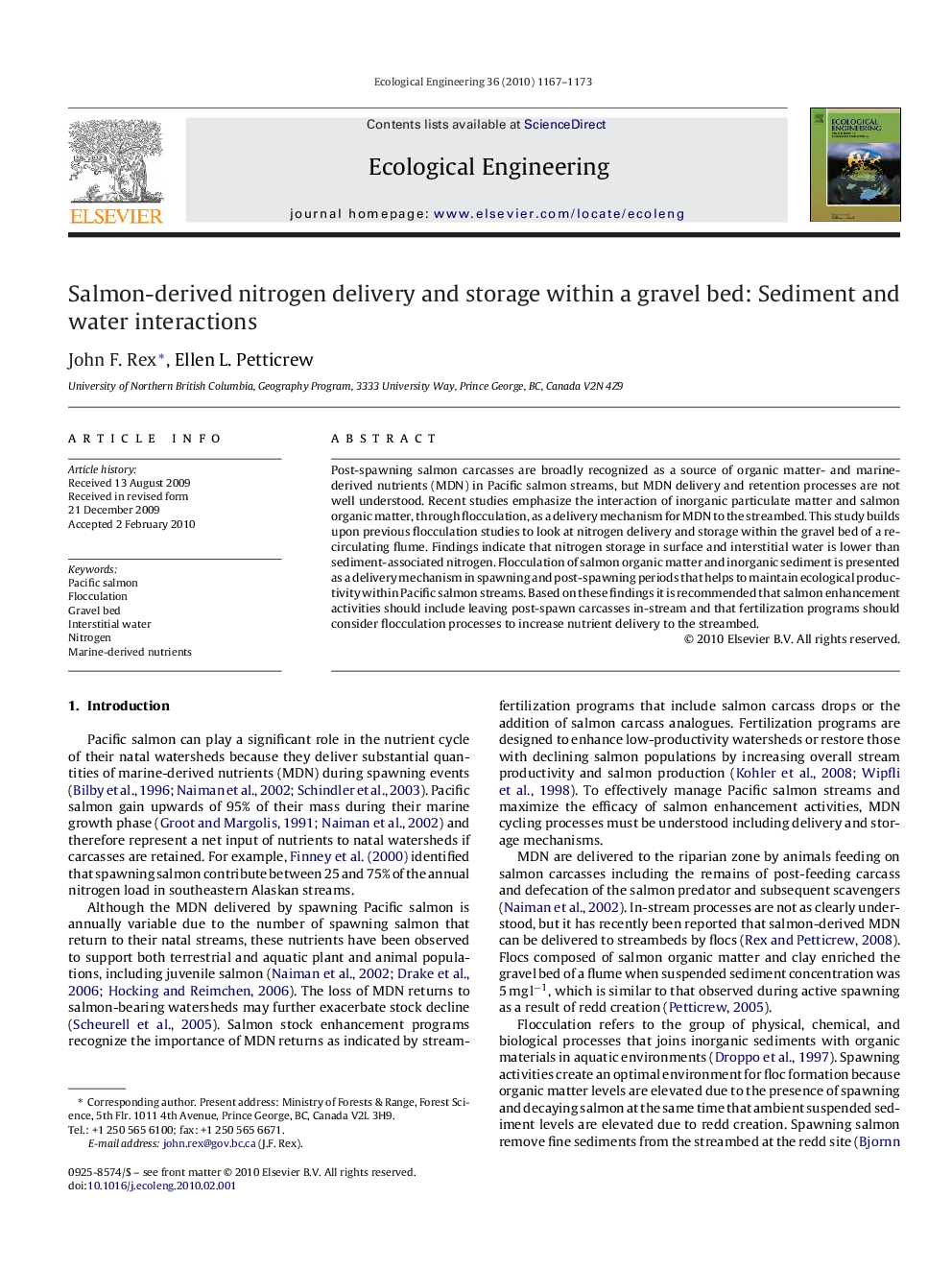| Article ID | Journal | Published Year | Pages | File Type |
|---|---|---|---|---|
| 4390460 | Ecological Engineering | 2010 | 7 Pages |
Post-spawning salmon carcasses are broadly recognized as a source of organic matter- and marine-derived nutrients (MDN) in Pacific salmon streams, but MDN delivery and retention processes are not well understood. Recent studies emphasize the interaction of inorganic particulate matter and salmon organic matter, through flocculation, as a delivery mechanism for MDN to the streambed. This study builds upon previous flocculation studies to look at nitrogen delivery and storage within the gravel bed of a re-circulating flume. Findings indicate that nitrogen storage in surface and interstitial water is lower than sediment-associated nitrogen. Flocculation of salmon organic matter and inorganic sediment is presented as a delivery mechanism in spawning and post-spawning periods that helps to maintain ecological productivity within Pacific salmon streams. Based on these findings it is recommended that salmon enhancement activities should include leaving post-spawn carcasses in-stream and that fertilization programs should consider flocculation processes to increase nutrient delivery to the streambed.
